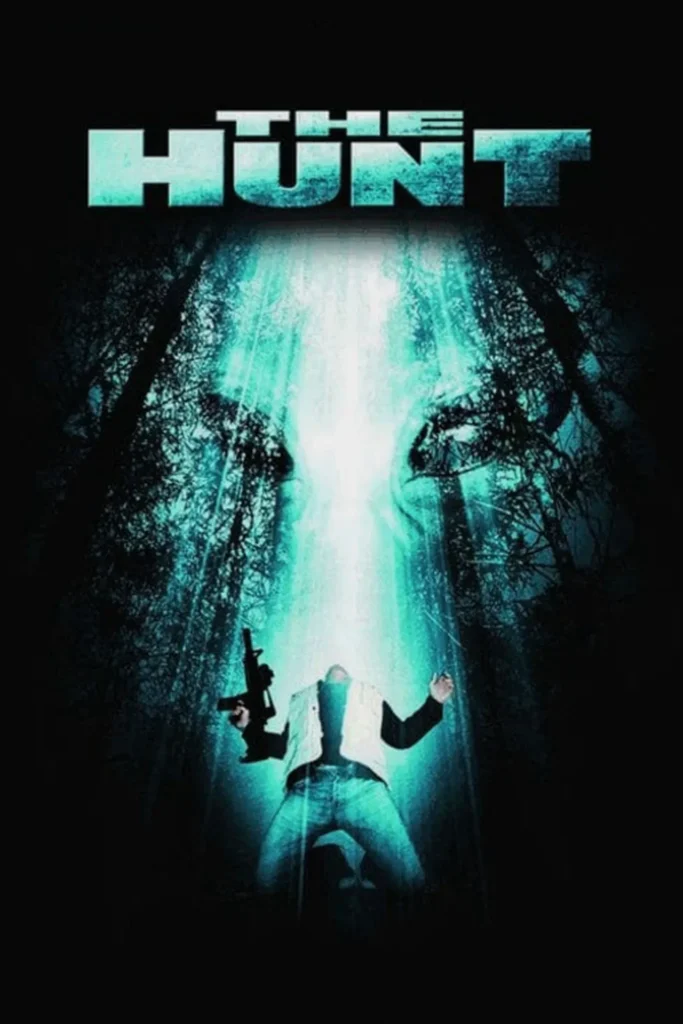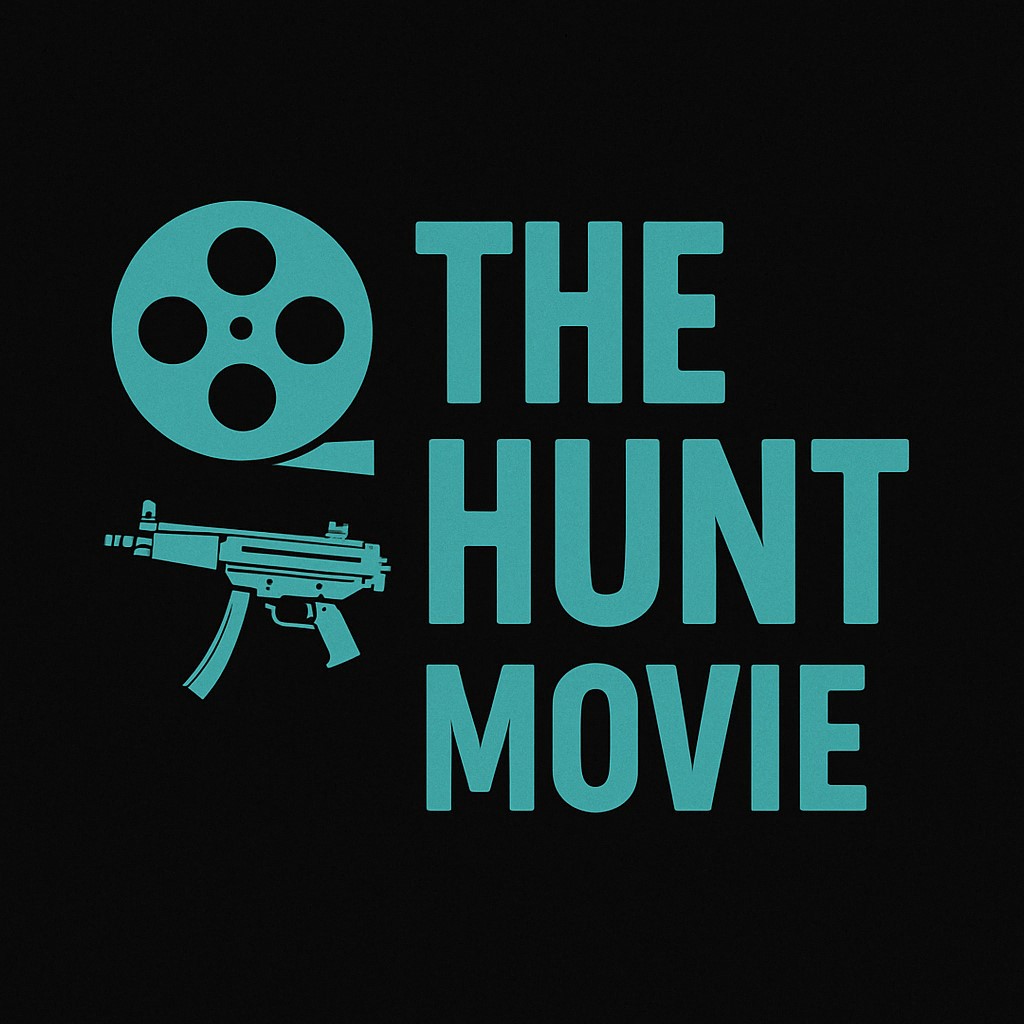
Director: Fritz Kiersch
Genre: Horror, Sci-Fi, Thriller
Runtime: 90 minutes
Language: English
IMDb Rating: 4.8/10
Rotten Tomatoes Audience Score: 1.5/5
Plot: Hunters Become the Hunted
In The Hunt, Jack Hamberg (Joe Michael Burke) embarks on a deer hunting expedition with his eight-year-old stepson, Clint (Mitchell Burns), and former news cameraman Atticus Monroe (Robert Rusler). Their aim is to film an instructional hunting video. However, after trespassing onto restricted government land, they encounter inexplicable phenomena, including eerie structures and a sense of being watched. As their situation deteriorates, it becomes evident that they are not alone, and their roles shift from hunters to prey.
Visual Style: Found-Footage Meets Traditional Filmmaking
The Hunt employs a hybrid filming technique, blending found-footage elements with conventional cinematography. This approach creates a disjointed narrative flow, which some viewers found confusing. The use of handheld cameras aims to enhance realism, but the inconsistent execution detracts from the immersive experience.
Cast: A Mix of Performances
Joe Michael Burke (Jack Hamberg): Delivers a competent performance as the determined stepfather.
Mitchell Burns (Clint): Portrays the young stepson; however, some critics found his performance lacking depth.
Robert Rusler (Atticus Monroe): Stands out as the abrasive cameraman, bringing intensity to his role.
Cliff De Young (John Kraw): Provides a steady presence, though his character’s impact is limited.
The ensemble’s performances are a mix, with Rusler’s portrayal receiving the most praise for adding tension to the narrative
Themes: Isolation and the Unknown
The film explores themes of isolation, the consequences of trespassing, and encounters with the unknown. As the characters delve deeper into the restricted area, they confront entities and phenomena beyond their understanding, highlighting human vulnerability when faced with inexplicable forces.
Reception: Mixed to Negative
The Hunt received predominantly negative reviews. Critics cited its uneven execution, lackluster pacing, and underwhelming climax as significant drawbacks. While some appreciated the film’s attempt to blend genres and its atmospheric setting, many felt it failed to deliver a compelling or coherent story.
The Critic’s Verdict
The Hunt presents an intriguing premise but falters in execution. Its attempt to merge found-footage with traditional storytelling results in a disjointed narrative that struggles to maintain tension or engagement. While it may appeal to fans of niche horror films, others might find it lacking in substance and scares.
Rating: 4/10
A promising concept hindered by inconsistent storytelling and pacing.
Pair With
The Blair Witch Project (1999) for a more effective use of found-footage horror, or Willow Creek (2013) for a suspenseful take on wilderness terror.
Cultural Footprint:
Despite its shortcomings, The Hunt contributes to the found-footage subgenre, reflecting the early 2000s trend of blending reality-style filming with horror narratives.
Addition
In addition to its exploration of isolation and the unknown, The Hunt (2006) delves into themes of human vulnerability and the consequences of trespassing into forbidden territories. The film’s narrative structure, which intersperses present events with flashbacks, attempts to build suspense by gradually revealing the characters’ fate. However, this approach has been critiqued for diminishing tension, as it often signals outcomes before they unfold, thereby reducing the impact of key plot developments .
Furthermore, the film’s attempt to blend found-footage elements with traditional cinematography has led to a disjointed viewing experience. Critics have noted that this hybrid style lacks cohesion, making it challenging for viewers to fully immerse themselves in the story . Despite these shortcomings, some audiences have appreciated the film’s atmospheric setting and the performance of Robert Rusler, whose portrayal of the abrasive cameraman adds a layer of intensity to the narrative .
